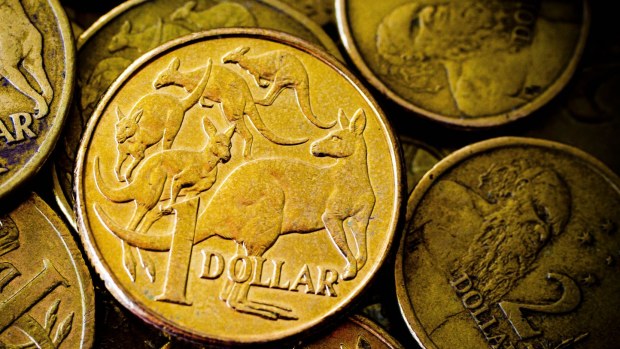Australian dollar drops on heightened policy divergence with the US
The Aussie has at least initially taken a hit in the wake of the Fed's forecast for three potential rate hikes in 2017.
At about 6.36am AEDT, the local currency was down 0.6 per cent to US74.52¢. Prior to the Fed's policy decision being announced at 6am AEDT, the Aussie was trading about 0.2 per cent higher.
Federal Reserve officials raised interest rates for the first time this year and forecast a steeper path for borrowing costs in 2017, saying inflation expectations have increased "considerably" and suggesting the labour market is tightening.

The latest statement puts into sharper focus the differences between the Fed and the Reserve Bank of Australia, and what may lie ahead for the Australian dollar. Glenn Hunt
New projections show central bankers expect three quarter-point rate increases in 2017, up from the two seen in the previous forecasts in September, based on median estimates.
The latest statement puts into sharper focus the differences between the Fed and the Reserve Bank of Australia, and what may lie ahead for the Australian dollar.
On the surface, Australia's currency recently played its traditional shock absorber role to perfection: it dropped four US cents in the 10 days following Donald Trump's shock victory.
But pushing beyond the greenback and comparing the exchange rate with some of Australia's top trading partners' finds a more worrying picture. Against China's, Japan's and South Korea's currencies, the Aussie has been appreciating strongly. James McIntyre, head of economic research at Macquarie Bank, reckons it's trading against the yuan at the equivalent of about 84 US cents - almost 10 cents above its current level.
``We've got a strong currency, it's just been hidden because of the focus on the US dollar exchange rate,'' McIntyre said, noting that against a basket of exchange rates, the Aussie is above the level assumed in the Reserve Bank of Australia's November update of its growth and inflation forecasts. ``The currency's gone from helping the economy to complicating its adjustment, as the RBA would put it.''
Given China and Japan are Australia's top two trading partners, one risk is the currency's strength will cut import prices and further compress Australia's already weak inflation.
But there's another problem. Macquarie says signs have emerged that Australia's economy has gone back to importing some services, which it had started producing at home and boosting employment in the process: the opposite of what policy makers are intending.
That then raises the question of whether markets are under-pricing the risk - a maximum 18 per cent chance next year - that the RBA will need to ease monetary policy again to offset the impact of the currency. It could also reduce the likelihood of an interest-rate increase that's been the topic of some discussion.

The currency dove after the Fed's refreshed rate forecasts. Bloomberg
Australia's economy shrank in the three months through September, just its fourth quarterly contraction since the last recession in 1991. While there were several one-off reasons for the slump that are unlikely to be repeated, McIntyre said there was more to it.
``We would be remiss to overlook the impact the strengthening of the currency, especially since the middle of the year, is having in terms of these tradeable sectors of the economy,'' he said.
Tony Morriss, an interest-rate strategist in Sydney at Bank of America Merrill Lynch, said Australia's central bank is likely to leave rates on hold ``for an extended period'' and the key factors to watch next year include the Aussie dollar and commodities.
``Domestic economic conditions will remain frail next year,'' said Morriss, who predicts core inflation will hold below the RBA's 2 per cent to 3 per cent target band until 2018. ``Currency appreciation would be detrimental to key drivers of growth in the trade-exposed sectors.''
Bloomberg
Subscribe to gift this article
Gift 5 articles to anyone you choose each month when you subscribe.
Subscribe nowAlready a subscriber?
Introducing your Newsfeed
Follow the topics, people and companies that matter to you.
Find out moreRead More
Latest In Economy
Fetching latest articles